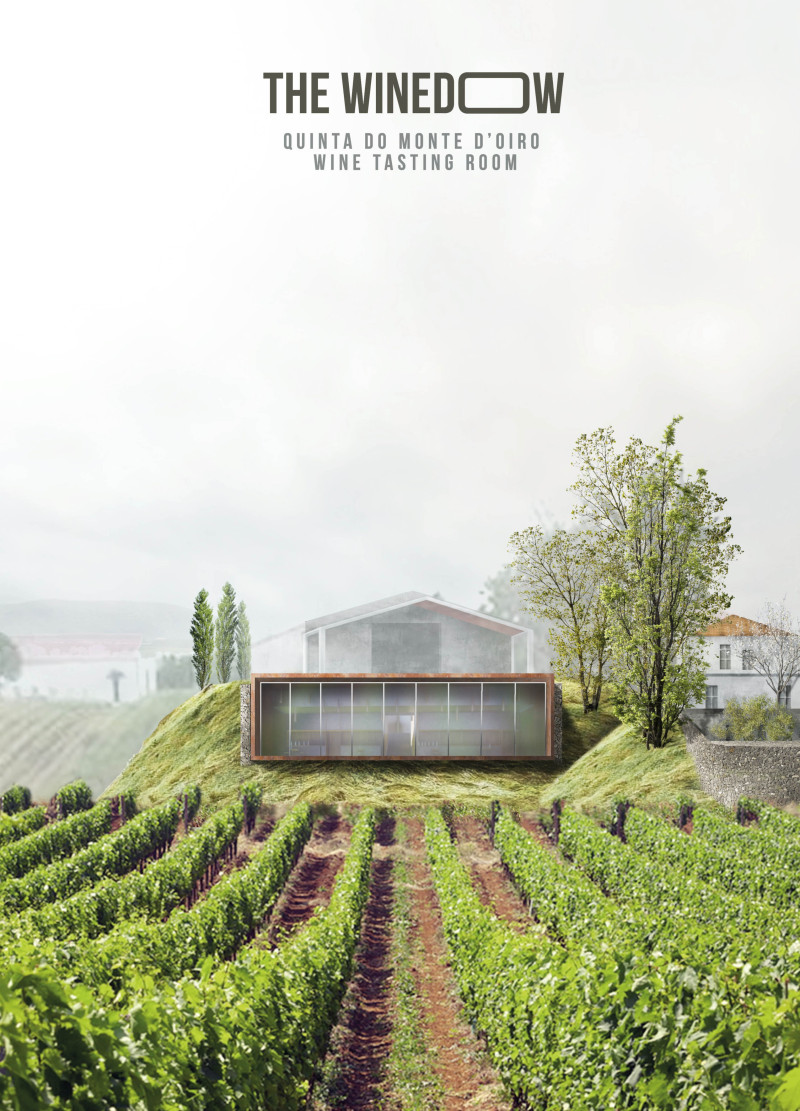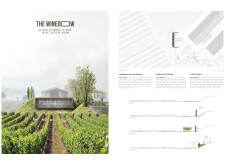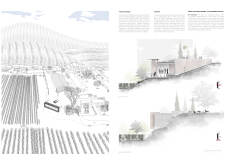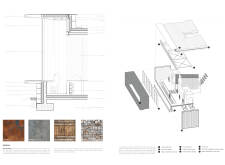5 key facts about this project
The Winedow at Quinta do Monte D’Oiro serves as a wine tasting facility situated in the heart of a prominent vineyard in Portugal. The project is designed to enhance the visitor experience by integrating the architectural elements with the surrounding landscape, emphasizing a connection to local viticulture. Its function revolves around providing a space for wine tasting and education, allowing visitors to engage with the heritage of the region while appreciating the natural beauty of the vineyard.
The design features a partially buried structure that harmonizes with the sloping terrain. Large glass walls offer panoramic views, inviting the landscape inside and creating a seamless transition between the indoor and outdoor environments. The layout accommodates various activities, including group tastings, educational sessions, and private events, reflecting adaptability in usage. The project also prioritizes sustainability, incorporating natural materials and environmentally friendly practices.
Material and Design Approach
The Winedow employs a thoughtful selection of materials that underscore its commitment to sustainability and local identity. Corten steel is utilized for its durability and aesthetics, allowing the building to weather naturally and blend into the environment. Locally sourced concrete and repurposed wood from wine barrels contribute to the project's low environmental impact while reflecting the region’s wine culture.
The architectural design places significant emphasis on natural light and ventilation. The use of large, operable windows enables cross-ventilation and encourages direct interaction with the outdoor environment. This approach not only reduces energy consumption but also enhances the overall visitor experience by providing a connection to the vineyard throughout the seasons.
Spatial Organization and Experience
The spatial organization within the Winedow is designed to facilitate fluid movement and engagement. The layout incorporates varied seating arrangements that cater to different social interactions. Visitors can gather in intimate groups or find solitude by enjoying designated quiet areas that overlook the vineyard. The strategic placement of entry points enhances accessibility while promoting exploration of the space.
Unique features include the integration of green roofs, which enhance biodiversity and contribute to natural insulation. Rainwater harvesting systems are designed to support irrigation needs, aligning with sustainable practices. The combination of these elements fosters an environment that encourages visitors to appreciate the cultural and environmental significance of winemaking in the region.
For a comprehensive understanding of the project's architectural ideas, explore the architectural plans, sections, and designs that demonstrate the thoughtful execution and innovation present in the Winedow. This project exemplifies how effective architectural design can create spaces that resonate with the surrounding context while fulfilling functional requirements.





















































